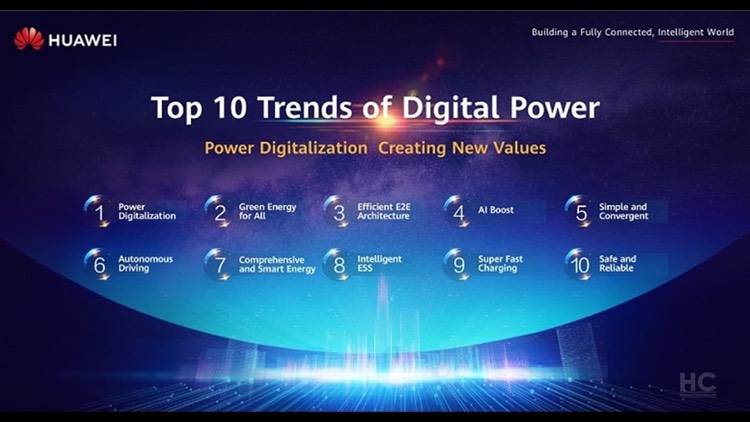The top 10 trends of digital power will shape the future of energy. In Huawei’s tone, the future will be 100% powered by technology even with current challenges tendering low penetration rates in regions like Africa.
However, the more technology advances, it’s the more development follows the same path attracting climate change as a key dangerous effect to the future. And so, Huawei’s vice president and president of the digital power line has shared light on the future trends of digital power in line with carbon neutrality.
According to Zhou, carbon neutrality is a top priority across the world today and it’s important to upgrade the energy infrastructure from fossil to renewable energy. Current world efforts are tied together under the Paris agreement which is a legally binding treaty on climate change with participation of over 110 countries.
All countries under the Parios agreement have committed themselves to carbon neutrality or to achieve zero carbon dioxide emission by balancing emissions in their atmospheres. And so, with energy as the root foundation of digital infrastructure, the entire ecosystem needs to give top priority to investment in digital energy infrastructure as the foundation for a digital world.

According to Huawei, the top 10 trends of digital power are centered around power digitalization, green energy for all, among other trends presented by Dr. Fang Liangzhou –– the Vice President and CMO of Huawei digital power product line, and these include:
- Power Digitalization
- Green Energy for All
- Comprehensive and Smart Energy
- Efficient E2E Architecture
- AI Boost
- Simple and Convergent
- Intelligent ESS
- Autonomous Driving
- Super-Fast Charging
- Safe and Reliable
Energy digitalization is an inevitable futuristic trend with Innovative integration of digital and energy technologies enabling intelligent management of power generation, power transmission, power distribution, power storage, and power consumption improving energy efficiency.
In terms of AI, Huawei forecasts AI to be widely applied in the energy field and will replace experts’ functions enabling independent system collaboration. With the increased advancement of technology, AI continues to showcase its stand as a trend to follow for cross-industrial implementation.
World wide, Data centers apply AI to adjust parameters to reduce power usage effectiveness (PUE). Intelligent staggering, charging, and discharging of battery based on peak-valley tariffs of electricity grids to save the electricity bill. For smart electric power, big data and AI can be used to warn about battery statuses 24 hours in advance.
“Digital Power will move towards Simple and Convergent network, including architecture convergent, simplified form and prefabricated modules. Energy devices will become compact, lightweight, and modularized.
For example; multi-power systems are integrated into a unified power system. Sites are becoming smaller and smaller, and having transitioned from indoor to Outdoor Cabinets and Outdoor to blade power supplies. And prefabricated modular construction mode is generally used for data centers.”
Dr. Fang Liangzhou explained
Apart from this, as the energy industry gradually transforms to digitalization, the traditional manual O&M mode will be changed, and the energy network O&M will achieve autonomous driving. This can be seen with evolving manufactures like Tesla, Ford, Toyota that continue to showcase self driving in real world sense.
Also, traditional energy systems will be changed from Silo architecture and isolated management to comprehensive smart management, achieving the goal of E2E collaboration including power generation, power distribution, transformation, and consumption.
By energy storage, common lithium batteries will evolve into an intelligent energy storage system (ESS) which will maximize the battery potential. More so, people will be able to enjoy super-fast charging everywhere, car owners will be able to charge vehicles in record times of less than 10 minutes providing a great experience to end users.
Hence, the future of digital power is embedded in evolving fast systems highly dependable on hardware reliability, software security, system resilience, security, privacy, reliability, and availability will become essential requirements.
